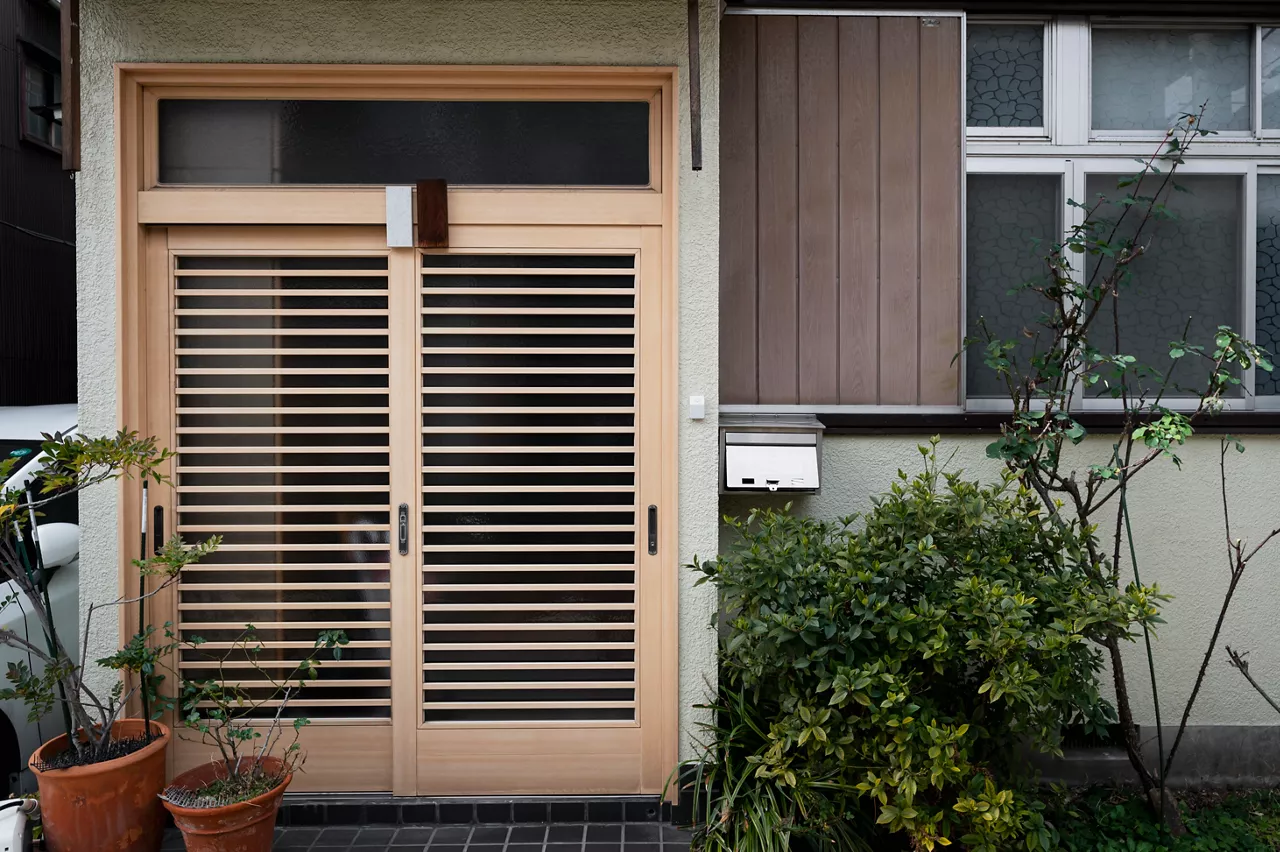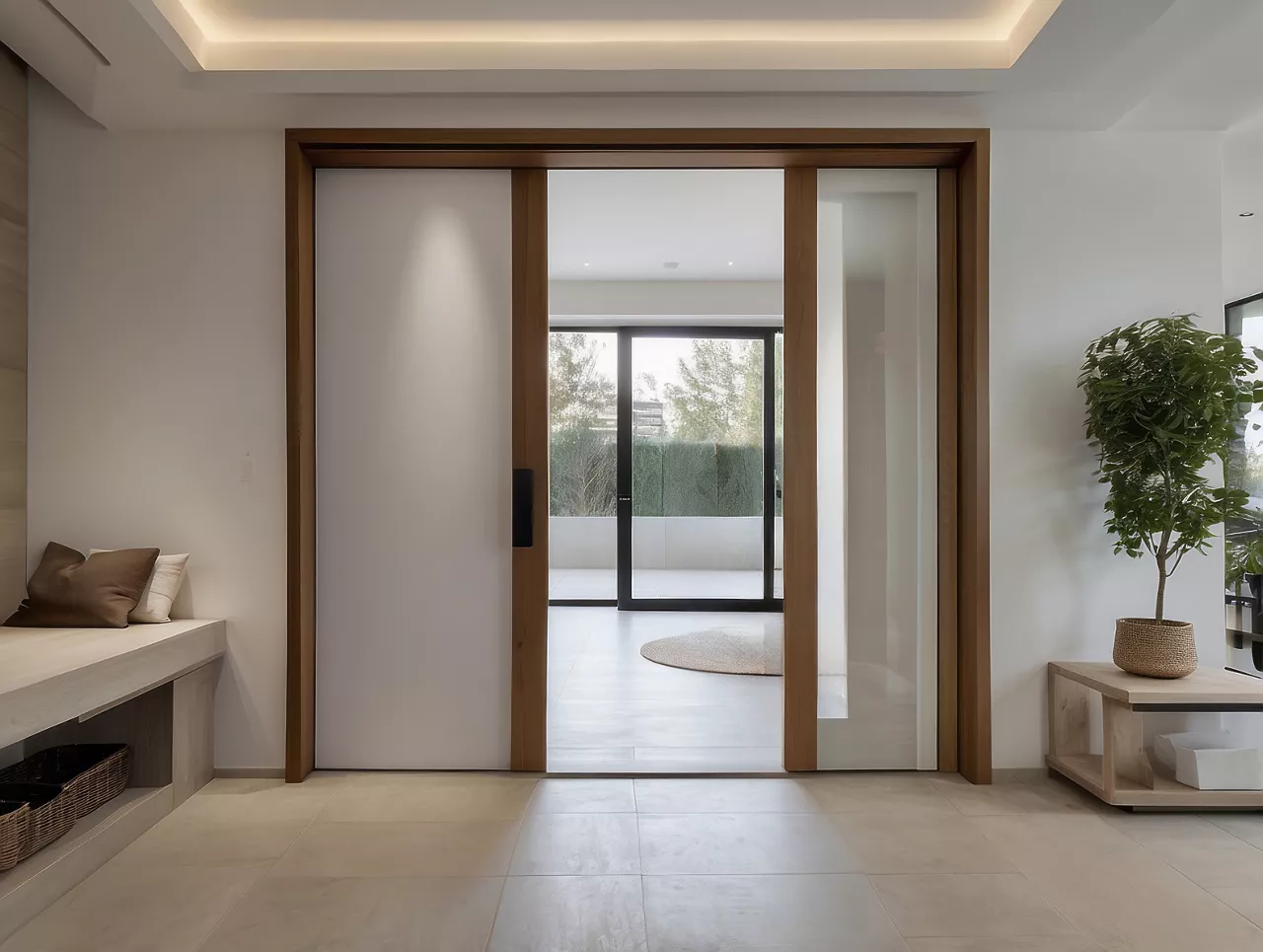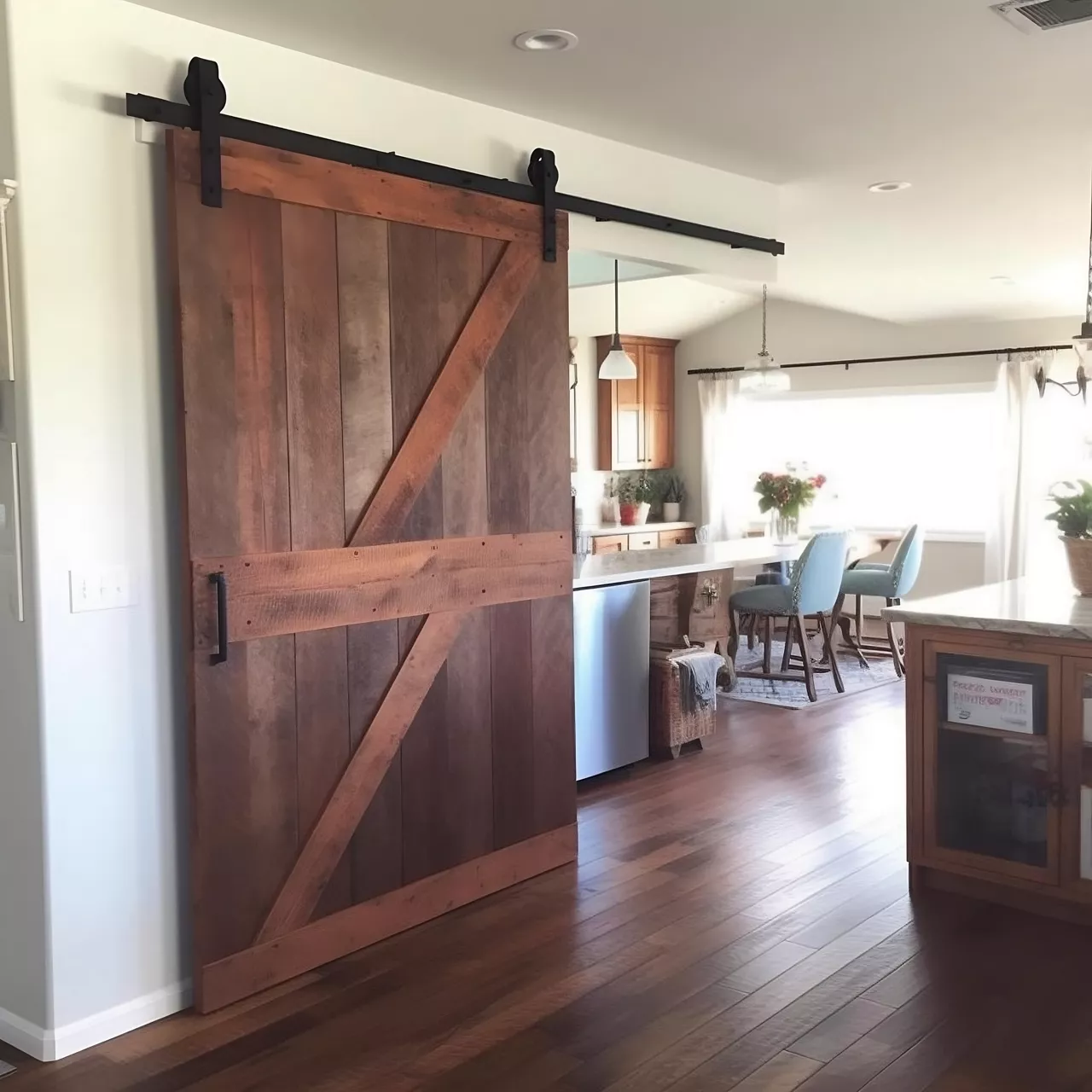
Using Pocket Doors and Barn Doors to Optimise Space

In the world of architecture and home building, optimal use of space is paramount. Urban settings, especially, often restrict or limit the design flow. Hence, designers often include pocket and barn doors. These doors,
- Enhance spatial flow,
- Provide aesthetic appeal and
- Help achieve practical functionality.
Let us now understand how these door styles can transform spaces and offer flexibility inmodern design.
● Pocket Doors
Pocket doors are an excellent solution for space-saving design. These doors, when open, slide into a cavity within a wall. This sleek mechanism provides several advantages for architects and engineers:
- Maximised Usable Space: Traditional hinged doors require space for swinging and disrupt a room's flow. Pocket doors eliminate this issue by sliding away into the wall, helping to use the additional space.
- Uninterrupted Sightlines: Pocket doors create a seamless transition between rooms. By eliminating the visual clutter of door swings, they maintain clean lines and open sightlines, enhancing the perception of space and light.
- Flexibility in Design: Pocket doors are customisable. They fit different architectural styles and finishes. Whether a minimalist design with flush panels or a more decorative approach, pocket doors can be tailored to balance the space's overall aesthetic.

● Barn Doors
Barn doors were originally designed for agricultural use. However, these doors have remarkably transitioned into residential and commercial interiors. Their distinct style and practicality offer unique benefits:
- Space Efficiency: Like pocket doors, barn doors slide open and eliminate the need for swing clearance. For areas where space is limited, barn doors are the perfect choice, such as small apartments and compact office spaces.
- Aesthetic Appeal: Barn doors offer versatility in design and add a rustic charm. They can be made of wood or metal, offering flexibility in customising. They provide a focal point in contemporary designs and blend seamlessly into more traditional designs.
- Ease of Installation: While pocket doors require a wall cavity, barn doors are fixed on a track. This installation process is very simple, cost-effective, and adaptable to the wall types. Hence, this makes the barn doors a flexible choice for many projects.

● Combining Functionality with Design
When integrating pocket doors and barn doors into a design, architects and engineers should consider the following factors:
1. Wall Thickness and Structure: While installing pocket doors, it is crucial to ensure the wall can accommodate the necessary cavity. Every wall has different structural integrity and accessibility—avoiding such factors can compromise the building’s stability.
2. Track Systems: Choose the high-quality track for barn doors that ensures smooth operation and durability. The choice of track and hardware can impact the door’s durability and overall look.
3. Privacy and Soundproofing: Pocket doors sometimes don't offer the same sound insulation as traditional doors. This is why adding acoustic treatments or using thicker door panels is necessary. Similarly, barn doors may also need additional treatments for enhanced privacy.
Pocket and barn doors are more than just functional elements of a home. They help to enhance spatial flow, make a space more utilisable, and improve the overall aesthetic appeal of a home.These innovative door solutions are must-haves for architects and engineers. While a simple door gives us privacy and enclosure, these doors create dynamic spaces that are both functional and visually pleasing. Embracing the flexibility and charm of pocket and barn doors not only optimises space but also contributes to a more harmonious and efficient living or working environment.
Subscribe and stay updated!
Get all the updates on our latest articles and client stories. Subscribe now!
Other articles you might like
-
TIPS AND TRICKSJan 07 2025| 3.00 min ReadTips to build a new home in 2021 The journey from buying a plot of land to constructing your own home on it is pretty amusing. It takes a long time and requires your complete dedication.
-
TIPS AND TRICKSJan 07 2025| 2.30 min ReadHow To Remove Mold From Your Roof Guide for Algae & Moss Removal on Your Roof · 1. Using Pressure Washers 2. Using Water-Bleach Mixture 3.Using Trisodium Phosphate & More. Click to Know More!
-
Home designsJan 07 2025| 2.00 min ReadSummer Home Maintenance Hacks Summer Home Maintenance Checklist · 1. Repair & Repaint 2. Prepare To Stay Cool 3. Don't Miss The Roof 4. Keep Your Grass Green 5. Check Your Gutters & More
-
Interior productsFeb 02 2023| 3.00 min ReadHow To Estimate Your Home Building Cost Home Construction Cost Calculator by tata aashiyana can assist you to determine approximate home construction cost based your choice of materials.






